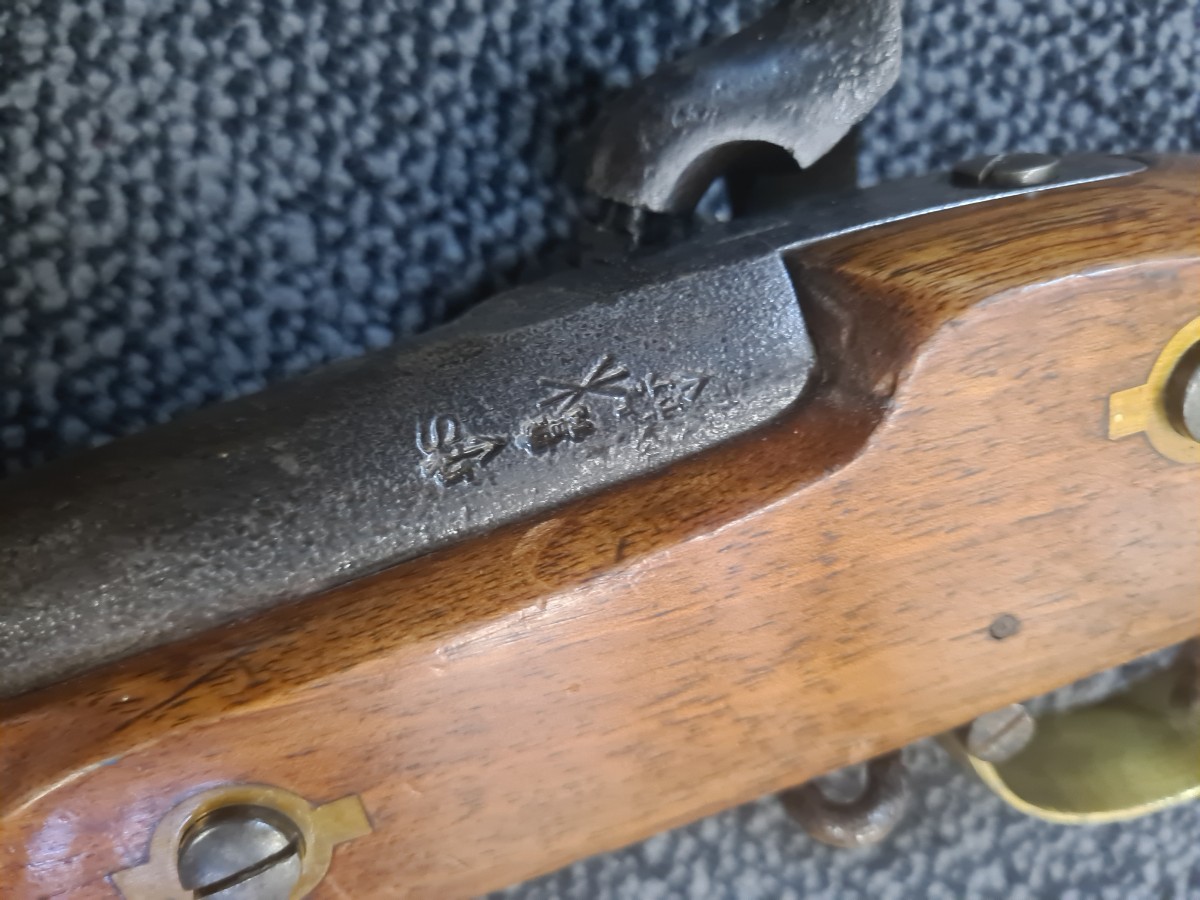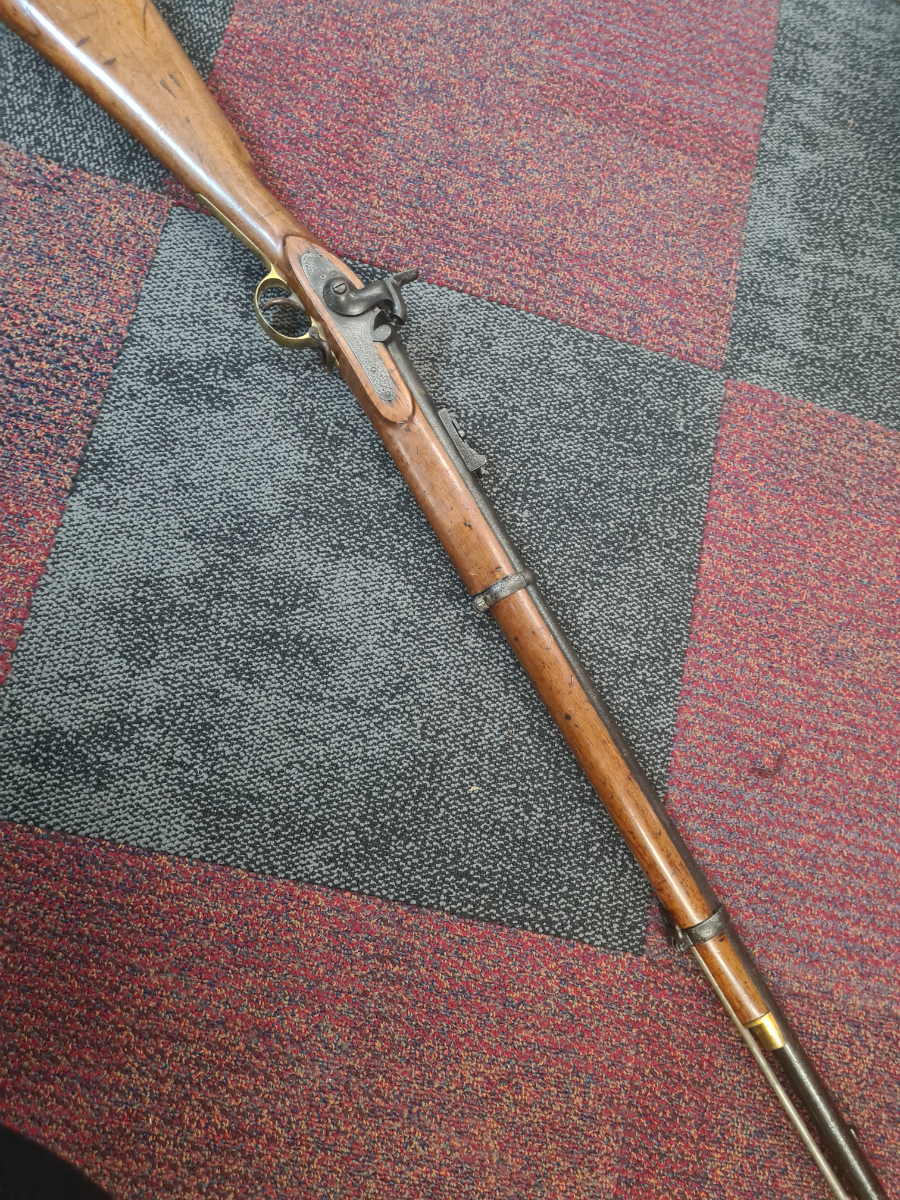
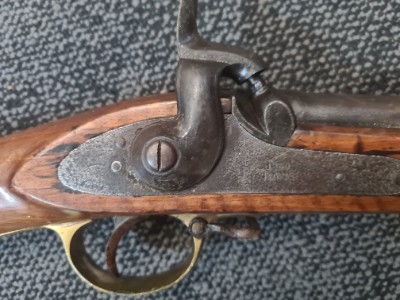
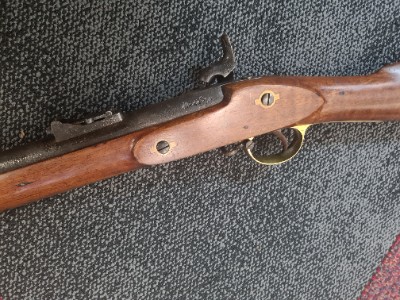
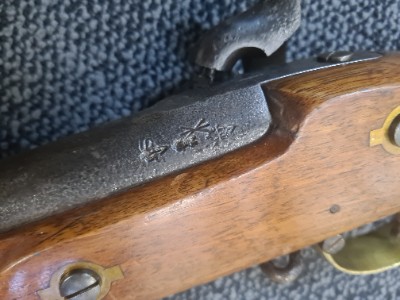
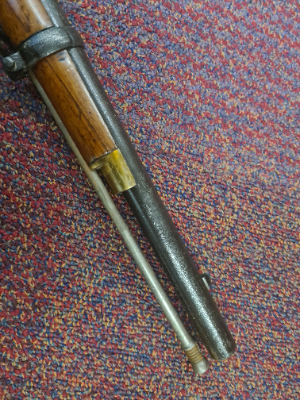
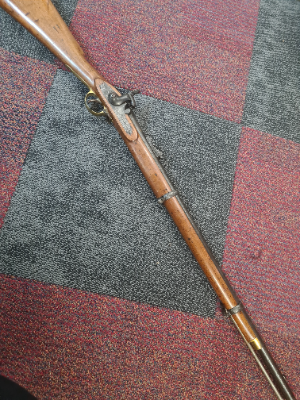
ID: 2691
2 Band Enfield Rifle
This item has been purchased.
Description 🔉
History:
On January 25, 1856, a significant development occurred in the history of firearms. The British Army officially approved one of the earliest and most important long arms derived from the P1853 Enfield Rifle Musket—the Pattern 1856 "Short Rifle." This variant, characterized by iron fittings and based on the P1853 Rifle Musket, retained the same .577 caliber bore and the same 3-groove rifling with a 1:78" rate of twist. However, it featured a shorter 33" barrel and a correspondingly shorter stock.
The Pattern 1856 introduced several key improvements, including a redesigned "double freed" lock mechanism aimed at reducing internal friction, an 1,100-yard rear sight, and a bayonet stud brazed to the barrel to accommodate the new Pattern 1856 saber bayonet. The "Short Rifle" was intended for issuance to various units, including the 60th Regiment of Foot, the Rifle Brigade, the Cape Mounted Rifles, the Royal Canadian Rifles, as well as sergeants in all line infantry regiments. The shortened barrel and slightly reduced weight were seen as significant enhancements for handling the rifle, particularly in skirmishing and similar activities.
By late November of 1856, contracts for the new Pattern 1856 short rifle were being awarded to Birmingham contractors, with additional contracts following suit with both Birmingham and London makers. However, concerns soon arose regarding the stability of the bayonet stud on the barrel and the potential for damage. This led to a redesign suggestion: relocating the bayonet lug to the upper barrel band rather than the barrel itself. To accommodate this change, the rifle's stock was extended to within 1" of the muzzle, with the front band replacing the old bayonet stud's location. Furthermore, a metal pin was added through both sides of the barrel band and the stock beneath the barrel to support the band and prevent deformation or rotation when the bayonet was attached. This redesigned rifle was officially approved on July 6, 1858, and became known as the Pattern 1856 Rifle No 2, also designated as the Pattern 1856/58 Rifle and occasionally referred to as the Pattern 1858 Rifle. The latter designation caused confusion as the Royal Navy had already adopted their Pattern 1858 rifle, which was a brass-mounted short rifle with a heavier 33" barrel, rifled with 5-grooves and a much faster 1:39" rate of twist—twice as fast as the rifle musket.
Consequently, the War Department began referring to the firearm as the "Bar on Band" rifle, which was the name subsequently used by collectors and arms enthusiasts. It is unclear how quickly contracts for the new No 2 rifle were issued or if existing contracts were modified to meet the "bar on band" specifications. Speculation suggests that only a few thousand of these rifles were manufactured. Due to the delay and sluggishness in Birmingham's trade when adapting to new pattern changes, it is unlikely that many "bar on band" short rifles were produced before the summer of 1859. It is further likely that it was not until 1860 that these rifles were being set up, inspected, and accepted for service.
Around the same time that the new rifle was being introduced with contractors, the War Department altered the specifications once again. On February 22, 1860, the War Department officially recommended the adoption of the army version of the P1858 Naval Rifle to replace the P1856 and P1856 No 2 rifles, designated as the Pattern 1860 Short Rifle. While the short rifle pattern had been accepted, there were concerns about its overall accuracy compared to the rifle musket. The navy-designed 5-groove barrel, with a rate of twist twice as fast as the previous pattern, significantly improved accuracy, turning the short rifle into a precise shooter. The heavier barrel with a slightly larger exterior diameter resolved issues related to barrel strength and bayonet lug problems. Less than two years after its official adoption, there was no longer any need to produce the Pattern 1856 No 2 Bar on Band Short Rifle.
Contractors gradually transitioned to the older pattern stocks, which were shorter and produced new, heavier barrels with a different rifling pattern. Pattern 1858 No 2 rifles continued to be delivered sporadically through 1861 and early 1862. However, after that period, the Pattern 1860 Short Rifle and its immediate successor, the Pattern 1861 Short Rifle, became the standard for the British military. Existing stocks of leftover "bar on band" parts were allocated for use in Volunteer pattern rifles and commercially made rifles. The Confederacy also acquired a number of these guns made from leftover "bar on band" parts during 1861-1862, featuring both iron and brass mountings.
Object:
In good condition by Enfield. Stock has been lacquered and cleaned. The action is strong with an excellent spring.
Seller Details
VISIT SELLERS SHOPTAKE SHOP TOUR
- Business Name: Raven Yard Antiques Shop
- Name: Jan
- Email: Enquiries@raven-antiques.com
- Phone: 07454992481
- Website: https://raven-antiques.com
- Address:
- 21 Watergate, Whitchurch, Shropshire, UK.
- SY131DP
- Note:
- Raven Yard Antiques Shop is a family run business located in the picturesque part of Shropshire in the Roman town of Whitchurch. We have a diverse selection of rare and historic goods to choose from. Please browse our online store or else visit our shop to see some of our amazing items.
Legal Note
For antique firearms such as muskets and rifles, this item is offered strictly as a collectors’ piece. It is sold as a historic firearm for display or study purposes only, and not as a modern, live-firing weapon. Export, import, and ownership regulations vary by country; buyers are responsible for ensuring compliance with their local laws and confirming that they are not prohibited from ownership. In accordance with UK guidelines, the seller is required to verify the buyer’s identification and age prior to completion of the sale.
Newest Items.
SEE MORE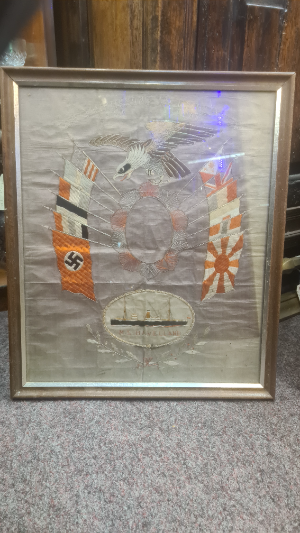
Product ID: 3523
1939 Silkwork Embroidery Of The M.S Have..., For Sale
Buy It Now: £250
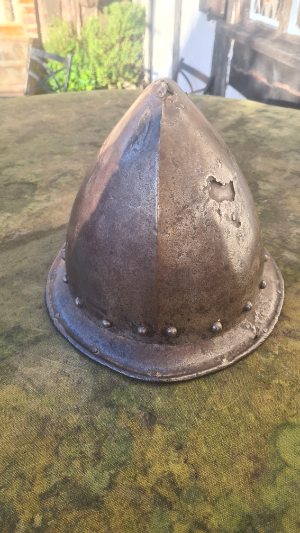
Product ID: 3522
17th Century Italian Cabasset Infantry H..., For Sale
Buy It Now: £895
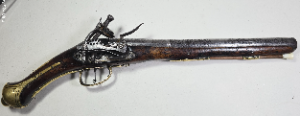
Product ID: 3521
18th Century Caucasian Miquelet Holster..., For Sale
Buy It Now: £995
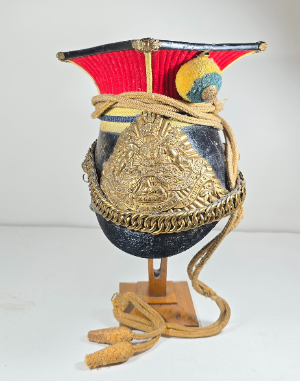
Product ID: 3519
1900 Dated Other Rank Lancers Czapka, For Sale
Buy It Now: £995
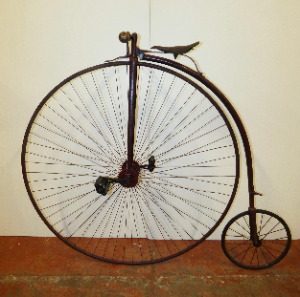
Product ID: 3518
Late 19th Century 54" Penny Farthing Wit..., For Sale
Buy It Now: £3800

Product ID: 3517
Late 19th Century Continental Hand Paint..., For Sale
Buy It Now: £330
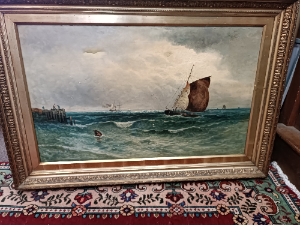
Product ID: 3516
A 19th Century Large Oil Painting, " Sea..., For Sale
Buy It Now: £600
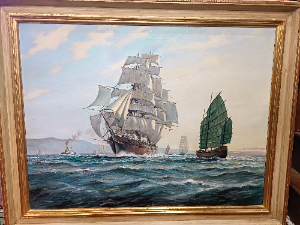
Product ID: 3515
"Out From Foochow" By Roland Davies, Sig..., For Sale
Buy It Now: £1000



